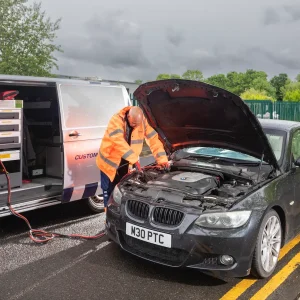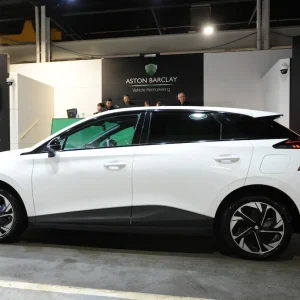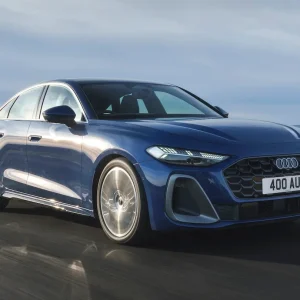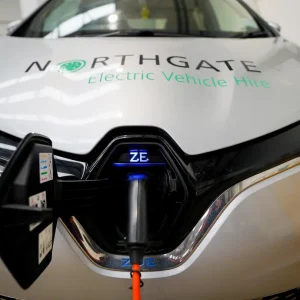An all-time high of 2.63 million new cars were registered last year, with fleet increasing its share of the market by now accounting for exactly 50.0% of the 1,317,570 cars registered during 2015.
Fleet was up by 11.8% on 2014, pushing the overall car market to a 6.3% rise despite retail numbers running at just 2.5% higher than what was seen in the previous 12 months. In total, 108,758 more cars went into the fleet sector than retail, reinforcing the former’s importance to the UK car market and to the automotive industry.
A further 107,121 vehicles were logged as ‘business’, meaning small fleet users, giving the business car sector a 54.1% chunk of the market.
“The new car market defied expectations in 2015, hitting an all-time record driven by strong consumer and business confidence,” says Mike Hawes, chief executive of the Society of Motor Manufacturers and Traders. “The past four years have seen a remarkable period of sustained growth, and the outlook remains positive, with every reason to expect the market to hold broadly steady in 2016.”
Ford steams ahead
As per usual, Ford topped the manufacturer’s chart, increasing its lead by more than 14,000 cars to 37,347 over second-placed Vauxhall; which saw its market share slide from 12.0% to 11.1%, thanks to a registration rise of 3.4% – the slowest rate of increase in the top 10 against the fleets sector average of 11.8% up (if you discount Citroen’s separation from its DS brand). In mitigation, the Astra was down by more than 5000 fleet registrations because the new model was only launched mid-year.
Despite its troubles in the latter part of last year, Volkswagen maintained third position, although a 5.4% increase in registrations over 2014 was also well below the market average, and saw the firm’s fleet sector share drop by half a percentage point to 9.1%. With BMW recording a 23.7% increase on 2014 – better than any other brand this side of 18th-placed Mini – the gap between third and fourth closed by more than 10,000 units to 24,581 units.
That result for BMW meant it regained the premium brand top spot a year after Audi nicked it, and BMW put more than 10,000 units of space between itself and its arch rival. Audi wasn’t helped by it being changeover year to a new A4, which plunged down the model table as a result, but Mercedes is now threatening to make it a real three-way fight for top premium brand spot, closing to within 8095 units of its
rival. Nissan, meanwhile, is just 189 units behind Mercedes after a strong year that saw the Qashqai hit the top five biggest-selling models in fleet.
Citroen being passed by Hyundai was the only position swap in the top 10 apart from BMW and Audi,
and as referenced above, that was only due to the separation of the French brand from its premium DS sibling, which is now an independent listing down in 27th place. Combine the two, as was the case with the 2014 figure, and Citroen would have maintained ninth place with an 8.5% growth in registrations.
It’s then as you were down to the edge of the top 15, where the 500X small crossover was the catalyst for Fiat jumping ahead of Volvo and Honda, while the other most impressive results on the fringe of the top 20 saw Mini 34.8% up year-on-year as the new five-door hatch began to find favour, and Land Rover record the best increase in the top 20.
A 41.2% rise in fleet registrations was fuelled largely by the new Discovery Sport model and the revised Evoque, which now has emissions as low as 109g/km thanks to new engines. That car also made a somewhat surprising appearance in the top 50 models, sneaking into the final spot on the chart after a 56.8% year-on-year rise in corporate sales.

On the cusp
Seat was the sole top 20 fleet brand to record a drop in fleet registrations, and it was a hefty one. The 12.7% fall in volume to fleet saw its 2.0% market share slide to 1.6%, with Mazda now just 1315 units away from putting the Volkswagen-owned Spanish brand out of the top 20.
Despite the result, the Spanish brand claimed it achieved record true fleet sales last year and increased its SME business, which means the reduction is a hefty drop in the number of vehicles it previously put into less-profitable channels.
While Mazda is closing in on Seat, it is Jaguar, two positions behind the Spanish brand, that could be a bigger threat, with a full year of XE sales expected to deliver significantly increased volume, backed up by the new F-pace crossover and the new XF. It’s coming from a lot further back, but a 46.6% increase in fleet registrations for 2015 could only be the start.
Mitsubishi’s growth was also impressive at 61.7% up year-on-year, alternatively fuelled as it was by the Mitsubishi Outlander plug-in hybrid, which was again the biggest selling ultra-low emission vehicle last year.
The two massively eye-catching figures at the bottom of the table were both boosted by relevant new product refreshing a range struggling for relevance in the sector, with the Jeep Renegade and Smart Fortwo and Forfour models being behind respective 242.8% and 484.0% fleet registration rises. Smart’s new Fortwo/Forfour saw it return to the fleet sales chart after disappearing last year, and Jeep was the only manufacturer to jump up more than two places.
With DS’s arrival between Jeep and Smart, Dacia and Subaru dropped out of the top 30 fleet manufacturers.
Plugging away
As mentioned above, Mitsubishi had a strong year because of its plug-in vehicle leadership, and registrations of ultra-low emission vehicles grew rapidly last year. While still small, the market was greater than 28,000 last year, a 94% increase on 2014.
Overall, alternative-fuelled vehicles, including traditional hybrids such as the Toyota Prius, recorded a year-end figure of 72,775, a 40.3% increase and a 2.8% share of the total market.
Successfully modelled
It’s interesting in the model mix that the volume is being shared around more. Last year, the threshold for getting into the top 50 was 7352, but in 2015 that went up to 8567, with the Range Rover Evoque being in 50th place.
Heading the top 50 was Ford’s Focus, the perennial fleet favourite, although the Fiesta moved up to second at the expense of the beleaguered Volkswagen Golf, and closed in significantly on its bigger brother.
Vauxhall’s Mokka was the big mover in the top 10, climbing into eighth spot with a 72.2% rise in fleet registrations as another illustration of the growth of the compact crossover sector, which also showed strong results for the Nissan Juke, Renault Captur and Peugeot 2008, as well as being behind Fiat and Jeep’s rises.
Illustrating Mercedes’ growth in fleet, the C-class, E-class and S-class all led their segments, although the fact that there are only three Merc models in the top 50, compared with four Audis and five BMWs, tells its own story about the breadth of the relative ranges. But the C-class, perhaps surprisingly, knocked the BMW 3-series off its compact executive perch, pushing it out of the top 10 fleet models by 340 units as a result.
Biggest climber in the top 50 was Ford’s Kuga, jumping 20 places to land in the top dozen fleet models, while a full year of the Mini hatchback’s five-door addition led to a 19-place climb.
Heading more than 10 places in the other direction were a pair of mini-MPVs in the form of the Citroen C4 Picasso and Ford C-max (the latter being refreshed mid-year), the outgoing Hyundai ix35, Audi’s A4, which was replaced by a new model in September, and Seat’s Leon, which suffered a 15-place drop, the biggest fall in fleet registrations among the top 50 at 17.8%.
Top new entry was the BMW 4-series, with the Toyota Aygo, Citroen C1, BMW 2-series, Volvo XC60 and aforementioned Outlander and Evoque also charting for the first time. They replaced the DS 3, Nissan Note, Honda Jazz, Kia Ceed, Ford B-max, Skoda Yeti and Jaguar XF.
Diesel down
The continued controversy surrounding diesel fuel and air quality at least partly contributed to a drop in diesel’s share of the market, going from 50.1% down to 48.5%, with the drop in fuel prices also likely to be an influencing factor. Petrol headed the other way, adding one percentage point on 2014 to get to 48.8%, overtaking diesel, with the rest being the 2.8% share achieved by alternative fuels. The SMMT predicts diesel will drop away again this year to 47.7% of the market.
With the new car market at the mercy of wider economic issues such as the potentially fragile Chinese economy, the SMMT’s latest prediction is a small fall in new car registrations in 2016, and another in 2017, with the number dropping by around 22,000 this year and a further 30,000 in the next.
But the British Vehicle Rental and Leasing Association is predicting further growth of a single-digit percentage among its rental and leasing members this year. “This growth will be led by innovation in product design, flexibility and delivery,” says chief executive Gerry Keaney. “As fleets seek lower running costs, demand for more efficient cars has grown, and the BVRLA expects that the lease fleet will continue to reduce its average CO2 emissions and outpace the wider new car market.”
Keaney says that average fleet emissions would drop to around 115g/km this year, while new cars registered by its members will average below 110g/km.





